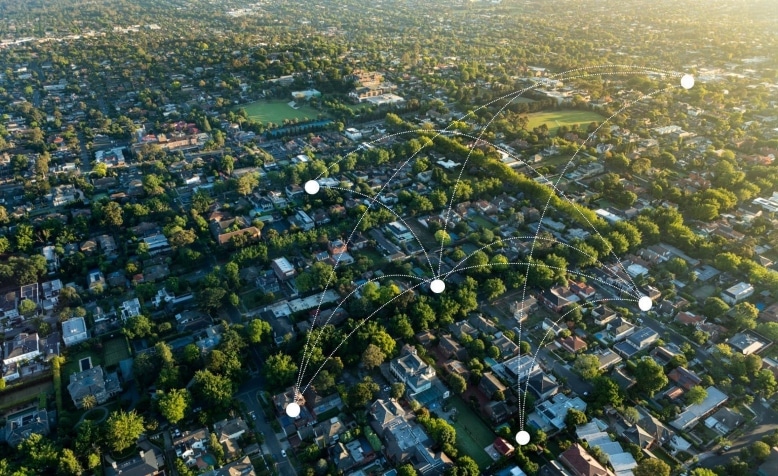Broadband Office Name: Wisconsin Broadband Office (WBO)
BEAD Award Amount: $1.06 B
Wisconsin Broadband Director: Alyssa Kenney
Website: https://psc.wi.gov/Pages/ServiceType/Broadband.aspx
Wisconsin BEAD Program Tracker
| State | IP Vol 1 Approval | IP Vol 2 Approval | Challenge Process Submission Closed | Submitted Challenge Results to NTIA | Challenge Process Results Approved by NTIA | 1-Year Subgrantee Selection Process |
|---|---|---|---|---|---|---|
| Wisconsin | Yes | No | Yes | No | N/A | N/A |
Wisconsin BEAD Program Information

Key Updates
Wisconsin has its Initial Proposal Volume 1 approved and is currently awaiting NTIA approval for its Initial Proposal Volume 2.
The state’s 30-day BEAD Challenge Rebuttal Period is now open for eligible participants to rebut eligible challenges.
All rebuttals must be submitted by July 20, 2024, at 1:30 pm. The final determination of the Challenge Results will take place from July 21 to August 20, 2024.
Wisconsin BEAD Program Plans & Maps
Wisconsin BEAD Program Initial Proposal Volume 2: Overview
*Information is subject to change. Wisconsin is awaiting official approval of Initial Proposal Volume 2 from the NTIA.
BEAD Long-Term Objectives
The Wisconsin Broadband Office (WBO) has established several goals for the BEAD program:
- Achieve the Highest Possible Level of Broadband Deployment and Adoption:
- Ensure broadband speeds of 100/20 Mbps for all residents by 2030.
- Provide 1 gigabit connections for Community Anchor Institutions (CAIs).
- Deliver Sustained, Long-Term Impact on Broadband Access:
- Ensure all Wisconsin residents have reliable and enduring access to broadband.
- Increase Affordability and Reliability of Broadband Service:
- Promote the Affordable Connectivity Program (ACP) to enhance service affordability.
- Ensure an Efficient and Trained Workforce for ISPs and Contractors:
- Support planning organizations, training programs, and workforce development initiatives to maintain a skilled workforce for broadband service providers and contractors.
Wisconsin BEAD Program Project Area Design
WBO will determine project units, which could be as small as a single location.
Wisconsin BEAD Program Extremely High Cost Threshold
After receiving applications, the EHC will not be determined by a specific dollar amount selected through cost model analysis. Instead, the EHC will be determined by sequentially eliminating the highest cost priority broadband projects as necessary to ensure a sufficient budget to meet all deployment goals.
BEAD Deployment Subgrantee Selection
WBO is asking for the following preregistration evidence from subgrantees and compliance with: Financial capability, managerial capability, operational capability, technical capability, ownership info, public funding info, compliance with laws, cybersecurity/supply chain compliance, and BABA/EHP/NEPA/NHPA compliance.
Primary Scoring Criteria for Priority Broadband Projects
- 40 pts – Project Cost
- 23 pts – Affordability
- 212 pts – Fair Labor Practices
Secondary Scoring Criteria
- 1 pt – Speed to Deployment
- 5 pts – Local and Tribal Coordination
- 7 pts – Endorsement by Government or Tribe
- 10 pts – Affordability Middle Class and Low-Cost Plan
- 2 pts – CAIs
Other Non-Priority Projects
Secondary Scoring Criteria for Non-Priority Broadband Projects
- 1 pt – Speed to Deployment
- 4 pts – Speed of Network and Other Technical Capabilities
- 5 pts – Local and Tribal Coordination
- 7 pts – Endorsement by Government or Tribe
- 8 pts – Affordability Middle Class and Low-Cost Plan
BEAD Non-Deployment Subgrantee Selection
Wisconsin’s BEAD allocation will provide sufficient funding to eligible BEAD applicants to reach all unserved and underserved locations in the state. The plan includes the following key components:
- Funding for Training and Skill Development:
- Provide funding support for non-deployment training and skill development activities.
- Competitive Subgrant Process:
- Utilize a portion of the remaining funds to support a competitive subgrant process for non-deployment activities.
- Grant-Making Process:
- WBO will draft a proposed grant-making process to direct BEAD funds for non-deployment activities through a competitive grant program, tailored to specific non-deployment activities.
BEAD Eligible Entity Implementation
WBO will allocate funds for various administrative and implementation activities essential to the BEAD program’s success. These activities include:
- Operation of the Challenge Process: Managing the process for addressing challenges related to broadband deployment.
- Subgrantee Selection Process: Overseeing the application and selection process for subgrantees.
- Subsequent Monitoring: Continuous monitoring to ensure program compliance.
- Program Compliance: Ensuring all activities and subgrantees adhere to BEAD program requirements.
- Reimbursement and Financial Management: Handling reimbursement and financial management activities.
- Evaluations, Certifications, and Audits: Conducting necessary evaluations, certifications, or audits related to the program.
Key Initiatives and Partnerships:
- Memorandum of Understanding (MOU) with the Wisconsin Technical College System (WTCS):
- WBO plans to enter into an official MOU with WTCS.
- The WBO will provide funding for occupational training, credentialing, or badging programs supporting broadband, administered at multiple WTCS locations.
- Ongoing Technical Assistance: Providing continuous support to ensure the effective implementation of broadband initiatives.
- Updated Broadband Intelligence Platform: Enhancing the platform to improve data collection and analysis for better decision-making.
- Additional Staff: Hiring more staff to support the expanded scope of administrative and implementation activities.
BEAD Local, Tribe, and Regional Broadband Planning Process
WBO has implemented several initiatives to support broadband expansion and digital equity:
- Technical Assistance and Programs:
- BEAD Technical Assistance Team
- Broadband Forward! Program
- Telecommuter Forward! Program
- BEAD Local Planning Grant Program
- BEAD Workforce Planning Grant Program
- PSC Broadband Planning Map
- Wisconsin Internet Self-Report (WISER)
- Tribal Engagement:
- Maintains a working relationship with Wisconsin’s 11 federally recognized Tribes.
- Engages with Tribal Nations through formal consultations hosted by the Great Lakes Inter-Tribal Council.
- Broadband Access Task Force:
- Partners with UW Extension, the Department of Public Instruction (DPI), and other interagency groups to support all populations in the state.
- Conducts county and Tribal surveys, webinars, the Internet for All Listening Wisconsin Tour, and direct outreach to covered populations identified in the Digital Equity Act.
- Stakeholder Engagement:
- Local Coordination and Engagement Meetings:
- Meetings and events to inform the 5-year action plan with WBO.
- Meetings and events to inform the 5-year action plan and Digital Equity Plan with covered populations and WBO.
- Technical Assistance and Presentations:
- Presentations to inform about the 5-year action plan by WBO.
- Presentations to inform about the 5-year action plan and Digital Equity Plan by WBO.
- Local Coordination and Engagement Meetings:
BEAD Labor Standards & Protection
WBO requires all BEAD subgrantees to submit the following information:
A record of past compliance with federal/employment laws:
- Must address info on deployment projects within the last 3 years.
- Certification form from an Officer/Director level employee of past compliance.
- Written confirmation that subgrantee has disclosed any violations from contractors within the last 3 years.
- Discussion of workforce plan
Plans for ensuring compliance with federal/employment laws:
- How subgrantee will ensure compliance in its labor/employment practices.
- Info on applicable wage scales, wage, and overtime practices for each class of employee expected to be involved in physical construction of the network.
- How subgrantee will ensure implementation of workplace safety committees.
- Comply with the Prevailing Wages Act.
- Other items as outlined in the BEAD NOFO.
BEAD Minority Business Enterprises / Women’s Business Enterprises / Labor Surplus Area Firms Inclusion
WBO will require subgrantees to commit to the ongoing implementation of their procurement and workforce strategies submitted at the time of application, which should extend preference to Women’s Business Enterprises (WBEs) and Minority Business Enterprises (MBEs).
Affirmative Steps as Outlined in the BEAD NOFO: WBO confirms it will take the necessary affirmative steps and implement additional strategies to promote the inclusion of small and minority businesses, as well as women’s business enterprises:
- Solicitation Lists and Outreach:
- Place qualified small and minority businesses and women’s business enterprises on solicitation lists through virtual outreach events.
- Targeted Solicitation:
- Ensure that small and minority businesses and women’s business enterprises are solicited whenever they are potential sources.
- Dividing Requirements:
- Divide total requirements into smaller tasks or quantities, when economically feasible, to maximize participation by small and minority businesses and women’s business enterprises.
- Flexible Delivery Schedules:
- Establish delivery schedules that encourage participation by small and minority businesses and women’s business enterprises.
- Utilizing Support Services:
- Use the services and assistance of organizations such as the Small Business Administration and the Minority Business Development Agency of the Department of Commerce.
- Subgrantee Requirements:
- Require subgrantees to take the same affirmative steps in relation to their subcontractors.
BEAD Cost & Barrier Reduction
1. Promoting the use of existing infrastructure.
2. Promoting and adapting dig-once policies.
3. Streamlining permitting processes.
4. Streamlining cost-effective access to poles, conduits, and easements.
5. Streamlining rights of way, including the imposition of reasonable access requirements.
BEAD Low-Cost Broadband Service Option
The low-cost broadband plan offered by providers under the Wisconsin BEAD program must adhere to the following guidelines:
- Pricing for Providers with Greater than 100,000 Subscriber Lines:
- The plan must cost $30 per month or less for the first year of service, inclusive of all taxes, fees, and charges, if the subscriber does not reside on Tribal Lands.
- For subscribers on Tribal Lands, the plan must cost $75 per month or less.
- Pricing for Providers with Less than 100,000 Subscriber Lines:
- The plan must cost $40 per month or less for the first year of service, inclusive of all taxes, fees, and charges, if the subscriber does not reside on Tribal Lands.
- For subscribers on Tribal Lands, the plan must cost $75 per month or less.
- ACP Eligibility:
- The plan must allow the end user to apply for the Affordable Connectivity Program (ACP).
- Speed Requirements:
- The plan must provide typical download speeds of at least 100/20 Mbps, or the fastest speeds the infrastructure is capable of if less than 100/20 Mbps.
- Latency:
- The plan must provide typical latency measurements of no more than 100 milliseconds.
- No Restrictions:
- The plan must not be subject to data caps, surcharges, or usage-based throttling.
- Upgrade Option:
- If the provider later offers a low-cost plan with higher speeds, eligible subscribers must be permitted to upgrade.
- Marketing and Outreach:
- The plan must be advertised and included in marketing and outreach materials distributed to current and potential customers.
- Availability:
- The plan must be offered throughout the provider’s entire footprint in the state of Wisconsin.
BEAD Middle-Class Affordability
To ensure middle-class affordability for broadband services, WBO will implement the following strategy:
- Tracking Cost-Burdened Households:
- Annually track the number and location of cost-burdened households to ensure that those within BEAD-funded networks are not cost-burdened.
- Data Requests to BEAD Sub-Awardees:
- The Commission will issue data requests to BEAD sub-awardees to verify that BEAD-funded networks remain affordable.
- Develop new and expanded strategies based on this data to ensure ongoing affordability.
- Promoting Structural Competition:
- The Commission will continue to promote structural competition in the broadband marketplace to maintain and enhance affordability.
